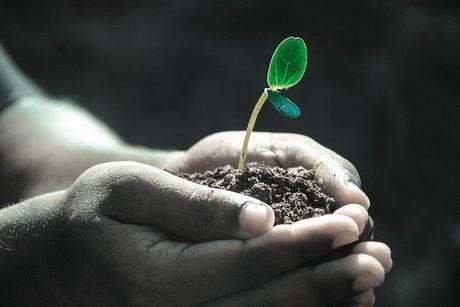Trees do more than complete the look of your lawn. They provide several health benefits, which means their function goes beyond providing natural aesthetic features in your outdoor space.
All plants, which include trees, filter the air by removing dust and absorbing pollutants such as carbon monoxide, sulfur dioxide, and nitrogen dioxide. As a result, you breathe cleaner, better quality air.
Since trees maintain low levels of carbon dioxide, they play an important role in reducing the heat intensity brought about by the greenhouse effect.
Additionally, providers of tree services in Midlothian, Virginia say that these plants help moderate the temperature in your property. This is because the leaves absorb the rays and energy from the sun, thereby keeping you cool in the summer.
Related: 4 EASY WAYS FOR A ECO-FRIENDLY GREEN LIFESTYLE
During the colder seasons, trees preserve warmth by screening your home from the harsh wind. They also help shield your house from the strong downpour of rain, sleet, and hail.
The roots of trees and other plants fight erosion and hold soil in place. They also absorb and store rainwater, which can reduce runoff and sediment deposit.
This, in turn, helps the groundwater supply recharge and prevent flooding and chemicals from going into bodies of water.
Lastly, plants and trees provide nourishment to the soil and other living things. Leaves, for one, make excellent compost that enriches the soil.
Many animals, including birds, bats, and beneficial insects get their food from trees and call these their homes.
Enjoying the Health Benefits Trees Provide

Trees, however, have to be in excellent condition if you want to experience the benefits they offer. This means maintaining and taking care of them well.
Below are the five best tips for maintaining healthy trees on your lawn:
1. Make sure your trees are sufficiently hydrated
Trees are some of the more low-maintenance plants you can have in your home. However, this doesn’t mean that they do not need your help to stay in good shape.
Newly planted and young trees require frequent watering. Mature, established trees, on the other hand, need to be watered regularly during drought and the warm seasons.
Unfortunately, an irrigation system won’t be much help in hydrating trees. These plants need deep watering to ensure the roots get the amount of moisture they require.
Aside from bringing out the hose to hydrate the trees the old fashioned way, you can also opt for drip irrigation, a method that uses a system of tubes or pipes to bring water directly to the plant.
2. Protect the tree’s roots
The health of trees depends largely on their roots. As such, you have to help the roots get enough nutrients from the soil and ensure they do not sustain any damage.
Start by making sure the soil is not compacted since soil compaction prevents water and oxygen from reaching the tree’s roots.
One sign that the soil is compacted is that your tree is no longer growing much.
Additionally, try to push a screwdriver into the ground. If you can’t insert it deeply, that means that the soil is already compacted.
Also, try to cut a portion of the soil. If it is severely dry and looks dull and grayish, it is compacted.
You can protect the roots by seeing to it that cars and heavy equipment are not allowed to drive over the root areas of the trees.
Avoid adding or removing soil beneath the tree canopies without consulting an arborist. Changing grades can harm the roots and weaken the trees, making them more susceptible to damage.
3. Look after the tree bark
The bark is also another important part of a tree. It serves as a living armor that protects the entire tree.
When the bark is damaged, the tree will be susceptible to fungal and bacterial infections and cause it to rot from the inside.
Hitting the trunk with a mower or any lawn equipment can create a wound on the bark. As such, steer clear of your trees when operating these machines.
If you have a sprinkler, make sure the strong water pressure coming from the sprinkler heads do not hit the same spot on the tree trunk since this will also injure the bark. If you notice this, redirect the head.
Also, young trees are more susceptible to bark injury. Protect them by covering them with plastic wraps.
You can also give your tree trunks additional protection from external injuries by maintaining a two- to three-foot-wide grass-free, mulched ring around each tree.
4. Mulch and fertilize your trees
Applying mulch around your trees and other plants is an excellent way to protect them from stress, help them get more moisture and nourishment, and add curb appeal to your lawn.
However, make sure you mulch your trees properly. If you do this incorrectly, you may end up damaging the roots.
To do this correctly, apply two to three inches of organic mulch under the canopy of the tree. It is best to opt for pine straw or compost since they are organic.
If you have young trees, fertilize them occasionally until they are established. For mature trees, apply fertilizer only if they are growing poorly or have leaves that are turning yellow.
You can also have a soil test conducted to check if your trees need additional nutrients that they can get from fertilizer.
5. Prune your trees properly periodically
Pruning improves the strength and structure of your trees. However, you can’t take this gardening task lightly.
One wrong step can also damage your tree.
If you are new to pruning, start by choosing the undergrowth that needs them. These include dead, decaying, broken, low, and crossing branches.
Additionally, you have to know the right time for pruning trees. If you have deciduous trees (the ones that shed leaves every year), it is best to prune them in the late fall to winter.
However, if you have flowering trees, prune them after blooming, which means you can do this any time of the year.
Young trees can benefit from pruning as well. You can help them grow stronger and develop the right shape if you prune them regularly. Your plants will also require less frequent trimming if you make this a habit.
As a bonus tip, you will do well to know the possible diseases that your tree could get. These illnesses vary from one species to another, so you may want to research them or ask a tree removal pro in Chesterfield, Virginia for the signs you have to watch out for.
When you follow these tips, your well-maintained, healthy trees will help you achieve your wellness goals at home.
Related: MEDITATION GARDEN: A NEW MUST-HAVE FEATURE FOR YOUR OUTDOOR SPACE

